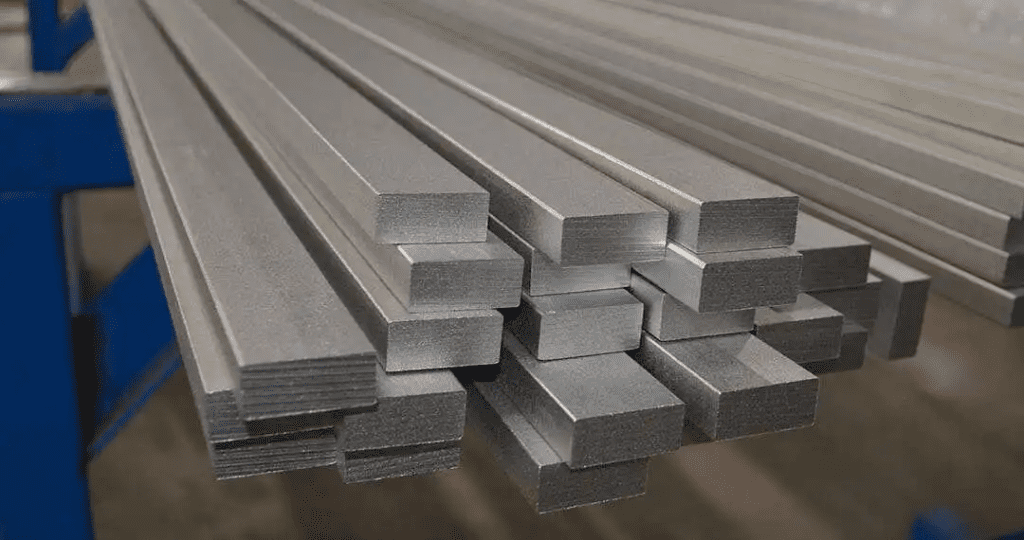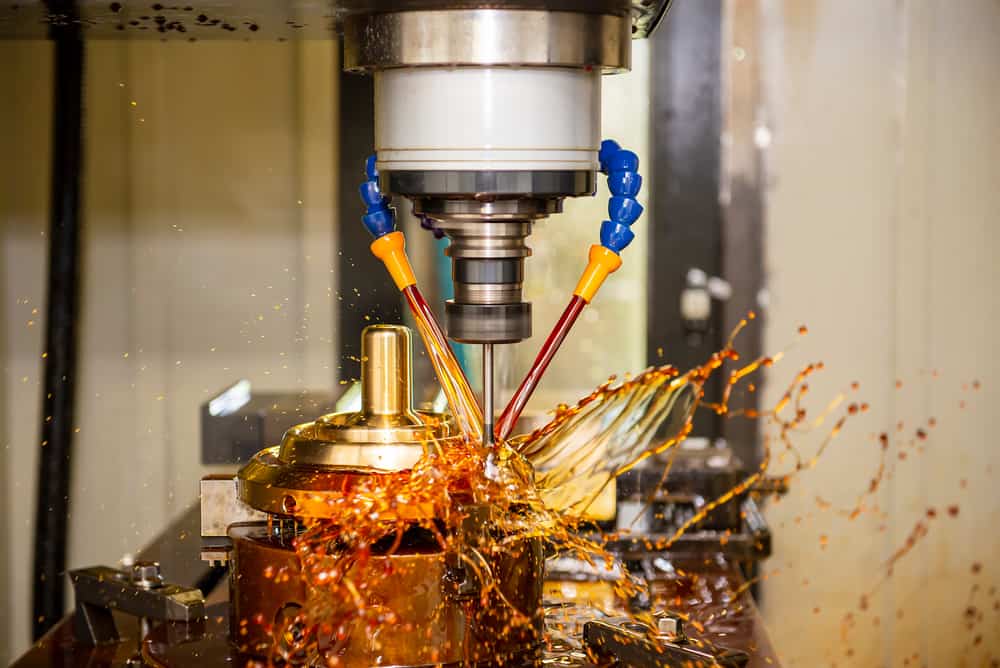In the conventional machining or metal-cutting process, excess material accumulates on the workpiece in the form of chips. A wedge-shaped cutting tool gradually removes the excess material from the workpiece. The continuous friction between moving chips and the rake surface of the cutting tool generates intense heat in the cutting zone. A suitable machining coolant maintains the temperature in the cutting zone within limits and prevents the burning of the machined surface.
It is worth noting that the function of a machining coolant is different from that of a lubricant. A coolant from a coolant tank removes the generated cutting heat from the machining zone. In contrast, a lubricant reduces the rate of heat generation in the machining zone by minimizing the dynamic coefficient of friction between the rake surface of the cutting tool and chips. The role of a machining lubricant starts before heat generation occurs, unlike a coolant that starts working after heat generation. A suitable cutting fluid, also called a metalworking fluid, can work as a machining coolant and lubricant.
Below, we discuss the types of machining coolants, the challenges of working with coolants, and how you can meet your requirements for metal plates or bar stock supply cut to specific dimensions with the help of industrial-quality sawing resources.
|
Buy Certified High-Quality Metals for Industrial Solutions |
||
|
New Aluminum |
New Steel |
New Stainless Steel |
 |
 |
 |
| Reliable supply: Consistent, certified aluminum stock you can trust. High-quality material: Superior-grade aluminum for precision needs. Custom cuts: Accurate cuts down to thousandths of an inch. |
Durability and strength: Reliable for projects needing long-lasting, tough materials. Cost-effective: Quality steel that offers strength without breaking the bank. Custom cutting: Precise cuts tailored to exact needs with top-tier cutting tools. |
Sustainability: Highly eco-friendly as the most recyclable metal on earth. High durability: Resistant to corrosion and wear, ensuring long-lasting performance. Custom precision cuts: Tailored to your specifications with quick, accurate results. |
Types of Machining Coolants and Their Suitability to Metals
Based on their formulations, machining coolants are broadly categorized into oil-based and chemical coolants. Oil-based coolants typically include mineral oil as a primary component, while chemical machine coolants, sometimes called synthetic coolants, contain little to no oil.
Oil-Based Machine Coolants
These are divided into 100% petroleum or mineral oils (straight oils) and soluble oils containing 60-90% petroleum or mineral oil with emulsifiers and other additives. Straight oils are particularly useful for low-speed operations. Wetting agents and extreme-pressure additives such as chlorine, sulfur, and phosphorus compounds are added to straight oils for severe cutting operations involving superalloys and stainless steels. Soluble oils improve cooling capabilities due to the blending of oil and water. Coolants containing soluble oils are used for light to heavy-duty applications involving ferrous and non-ferrous metals.
Chemical Machine Coolants
Also called synthetic or semi-synthetic fluids, chemical machining coolants contain very little oil and mix easily with water. Synthetic fluids have no petroleum or mineral oil and have a high cooling capacity for operations such as surface grinding. Simple synthetics or true solutions are being used for light-duty grinding operations. For a high-speed machining process at faster feed rates, complex synthetics are used.
In contrast, emulsifiable synthetics have better wettability and good cooling capabilities, which are particularly useful in cutting operations on high-temperature alloys. Emulsifiable synthetics have additional chemical agents such as amines and nitrites, phosphates, and others that make them useful as both synthetic lubricants and coolants during heavy-duty machining operations. Semi-synthetic fluids are a hybrid of soluble oils and synthetics. These fluids have better cooling properties than soluble oils and are used for high-speed cutting operations with faster feed rates.
Compared to standard carbon steel, metals such as titanium, Inconel, and stainless steel are hard to machine and require machining coolants with higher amounts of oil. Materials such as aluminum, brass, and standard carbon steel require machine coolant concentrations with increased water content for additional cooling.
The choice of the right machining coolant depends on several factors, including the metal you are working with, the type of machine or equipment used, and machining operations and speeds. For example, if you use a CNC machine, you need a CNC machine coolant. It is specifically formulated to withstand the challenging machining operations of a CNC machine.
The right coolant systems reduce operations costs and improve the productivity of your machine tools. Proper maintenance can further improve tool life. Partnering with a team of experienced professionals with industrial-quality sawing resources can help you overcome the challenges of determining the right machining coolant for your specific metal sawing requirements.
Outsourcing Your Metal Sawing Requirements
At Industrial Metal Service, we provide precision sawing of high-strength metals and alloys such as nickel, stainless steel, and titanium. With our advanced Amada PCSAW 530 X, we can easily and quickly cut specialty metals to the dimensions you require for your production processes. As a trusted and reputed metal supplier in the San Francisco Bay Area and nationwide, we have been providing industrial metal sawing services to our clients for more than two decades. With clean, accurate metal cutting, we ensure reduced material wastage and improved cost savings for your business.
At Industrial Metal Service, we understand the challenges of metal cutting and figuring out the right machining coolant for operations. We take care of all your metal sawing needs to help you focus on machining, welding, and fabricating.
 Angle
Angle Cast Plate
Cast Plate Diamond Plate
Diamond Plate Flat Bar
Flat Bar Plate
Plate Round Bar
Round Bar Square Bar
Square Bar Square Tubing
Square Tubing Round Tubing
Round Tubing Angle
Angle Channel
Channel Diamond Plate
Diamond Plate I Beam
I Beam Round Bar
Round Bar Sheet
Sheet Square tubing
Square tubing Round Tubing
Round Tubing Rectangular Tubing
Rectangular Tubing Plate
Plate Rectangular Bar
Rectangular Bar Rectangular Tubing
Rectangular Tubing Round Bar
Round Bar Sheet
Sheet Square Bar
Square Bar Square Tubing
Square Tubing
